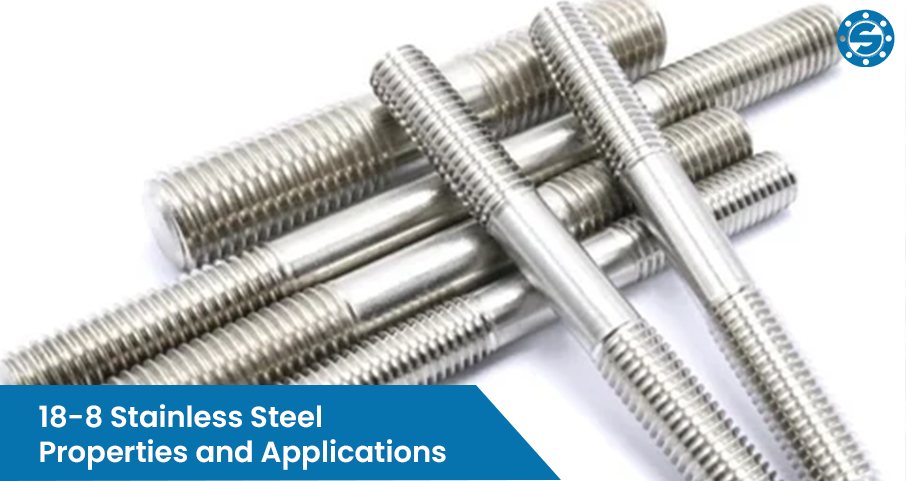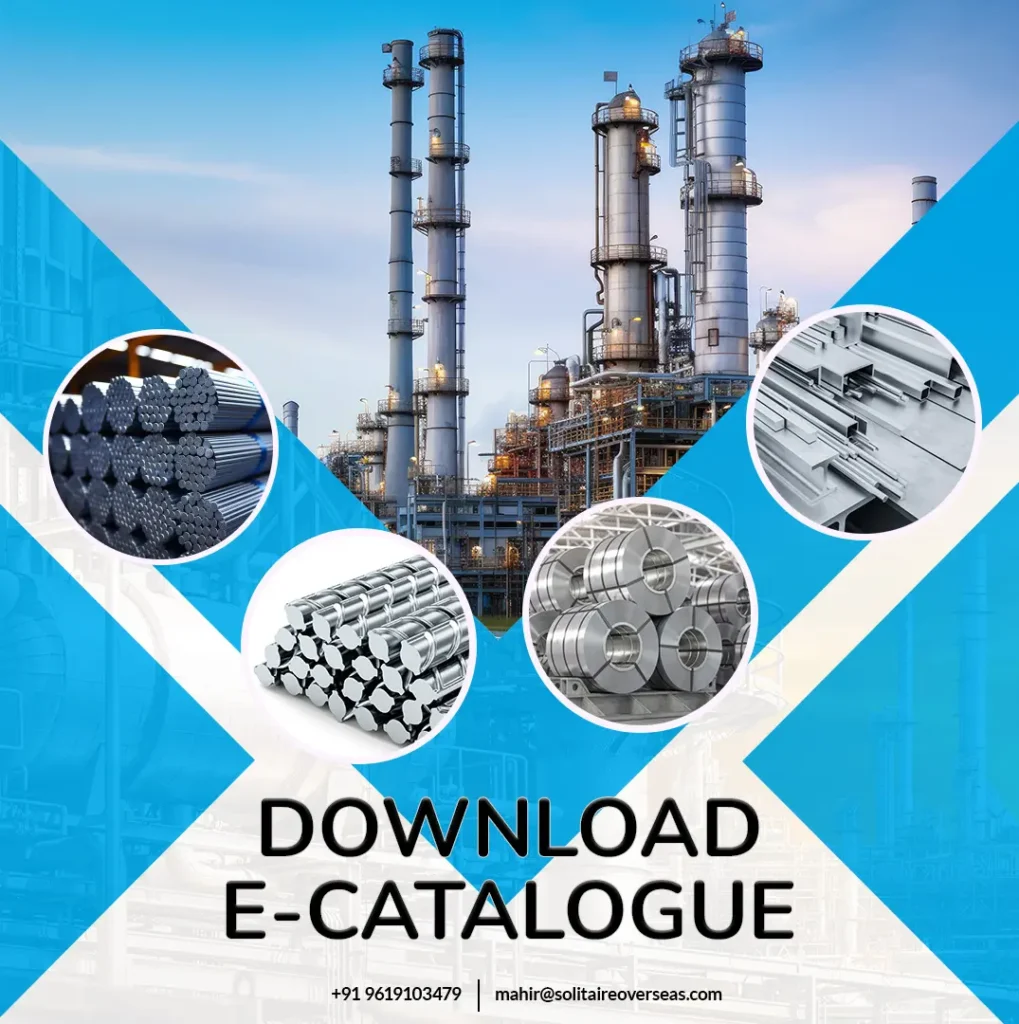18-8 Stainless Steel Properties and Applications

18-8 stainless steel, commonly referred to as 304-grade stainless steel, derives its name from its specific composition, which includes about 18% chromium and 8% nickel. The remaining composition is primarily iron along with small amounts of other elements. This steel is recognized by various designations, including 301, 302, and 304.
Due to its excellent corrosion resistance and good formability, 18-8 stainless steel is widely used in various applications, including kitchen equipment, food processing, and industrial components. Its durability and resistance to rust make it a popular choice in many industries.
What Does 18/8 Stainless Steel Mean?
18/8 stainless steel is a popular type of austenitic stainless steel, recognized for its versatility and durability. The name 18/8 refers to its composition: it contains 18% chromium and 8% nickel. This unique combination provides excellent resistance to corrosion and oxidation, making it suitable for various applications.
This type of stainless steel is easy to work with and clean, and it comes in multiple finishes and appearances. It is often referred to as 304-grade stainless steel or simply austenitic steel.
Stainless steel is a low-carbon alloy that contains at least 10% chromium. The presence of chromium is what gives the steel its corrosion-resistant properties. It forms a protective layer of chromium oxide on the surface, which can repair itself if damaged, as long as there is oxygen present.
While the high chromium content of 18/8 steel enhances its resistance to corrosion, other elements like molybdenum, nickel, and nitrogen also contribute to its performance. There are over 60 grades of stainless steel, categorized into about five main classes based on their alloying elements, which influence their structure and properties.
18-8 Stainless Steel Chemical Compositions
| Chemical Composition, % | ||||||||||
| ASTM | AISI (UNS) | C, ≤ | Si, ≤ | Mn, ≤ | P, ≤ | S, ≤ | Cr | Ni | N, ≤ | Product |
| ASTM A240/A240M | 304 (UNS S30400) | 0.07 | 0.75 | 2.00 | 0.045 | 0.030 | 17.5-19.5 | 8.0-10.5 | 0.10 | Plate, Sheet, and Strip |
| ASTM A276A/276M | 0.08 | 1.00 | 2.00 | 0.045 | 0.030 | 18.0-20.0 | 8.0-11.0 | – | Bars and Shapes | |
Mechanical Properties of 18/8 Stainless Steel
| Mechanical Properties | |||||||||
| ASTM Type | AISI (UNS) | Tensile Strength, (MPa), ≥ | Yield Strength, ≥ (MPa) at 0.2% Offset | Elongation in 50 mm (%, ≥) | Reduction of Area, %, ≥ | Brinell Hardness, (HBW) ≤ | Rockwell Hardness, (HRBW) ≤ | Product | Condition |
| ASTM A240/A240M | 304 (UNS S30400) | 515 | 205 | 40 | – | 201 | 92 | Plate, Sheet, and Strip | – |
| ASTM A276A/276M | 515 | 205 | 40 | 50 | – | – | Bars and Shapes | Hot finished | |
| 620 | 310 | 30 | 40 | – | – | Cold finished, Dia ≤ 12.7mm | |||
| 515 | 205 | 30 | 40 | – | – | Cold finished, Dia. > 12.7mm | |||
Equivalent Grade of 18-8 Stainless Steel
| 18-8 stainless steel equivalent grade | |||||||||
| US | European Union | ISO | Japan | China | |||||
| Standard | Type | Standard | Grade (Steel Number) | Standard | Grade (ISO Number) | Standard | Grade | Standard | Grade |
| AISI SAE; ASTM A276/A276M; ASTM A240/A240M; | 304 (UNS S30400) | EN 10088-1; EN 10088-2; EN 10088-3 | X5CrNi18-10 (1.4301) | ISO 15510 | X5CrNi18-10 | JIS G4303; JIS G4304; JIS G4305; | SUS304 | GB/T 20878; GB/T 1220; GB/T 3280 | 0Cr18Ni9; 06Cr19Ni10 (New designation) |
| 304L (UNS S30403) | X2CrNi18-9 (1.4307); X2CrNi19-11 (1.4306) | X2CrNi19-11 (4306-304-03-I) | SUS304L | 00Cr19Ni10; 022Cr19Ni10 (New name) | |||||
18/8 stainless steel Physical Properties
| Density, g/cm3 (lb/in3) | 7.93 (0.286) |
| Melting point, °C (°F) | 1400-1450 (2550-2650) |
| Specific heat capacity, J/kg·K (Btu/lb ·°F) | 500 (0.12) at 20 °C (68 °F) |
| Electrical resistivity, μΩ·m | 0.72 at 20 °C (68 °F) |
| Conductivity, %, IACS | 2.5 |
| Magnetic permeability | 1.02 (Approximate) |
| Elastic modulus (Modulus of Elasticity), GPa (106 psi) | 193 (28) |
| Thermal diffusivity, mm2/s (in2/s) | 3.84 (0.006) |
| Thermal conductivity, W/m·K (Btu/ft·h·°F) | 16.2 (9.4) at 100 °C (212 °F) |
| 21.5 (12.4) at 500 °C (932 °F) | |
| Coefficient of thermal expansion (CTE), 10-6/K (μin./in·°F) | 17.2 (9.6) at 0-100 °C (32-212 °F) |
| 17.8 (9.9) at 0-315 °C (32–600 °F) | |
| 18.4 (10.2) at 0-538 °C (32-1000 °F) |
Advantages of 18/8 Stainless Steel
18/8 stainless steel is favored across many industries for a variety of reasons:
- Excellent Corrosion Resistance: This steel withstands exposure to moisture, chemicals, and corrosive substances, making it ideal for tough environments.
- High Strength and Durability: It is strong enough to handle heavy loads and resist impacts and mechanical stress.
- Non-Porous Surface: The smooth surface inhibits bacterial growth, is easy to clean, and reduces the risk of cross-contamination.
- Aesthetic Appeal: Its shiny, silver finish remains attractive, even after extended exposure to harsh conditions.
- Versatility: 18/8 stainless steel can be easily shaped, machined, welded, and fabricated into various products.
- Recyclability: This material is fully recyclable, retaining its properties through multiple recycling processes.
Disadvantages of 18/8 Stainless Steel
Despite its benefits, 18/8 stainless steel does have some downsides:
- Higher Cost: The significant nickel content makes it more expensive than some other types of steel.
- Magnetic Properties: Although typically non-magnetic, it can become slightly magnetic after cold working or certain machining processes.
- Performance at High Temperatures: It may not perform well in high-temperature settings, as its mechanical properties can diminish and oxidation may occur.
- Maintenance Requirements: To keep its surface finish intact and prevent staining or corrosion—especially in highly corrosive environments—regular maintenance may be necessary.
Applications of 18/8 Stainless Steel
- Cookware: Ideal for pots, pans, and cooking utensils because of its ability to withstand heat and resist corrosion.
- Kitchen Appliances: Found in items like dishwashers, refrigerators, and ovens due to its strength and ease of cleaning.
- Architectural Elements: Used for window frames, decorative components, and other building parts due to its aesthetic appeal and weather resistance.
- Automotive Parts: Often used in grilles, exhaust systems, and body panels for its durability and resistance to corrosion.
- Medical and Dental Equipment: Highly valued for its hygienic properties, ease of sterilization, and biocompatibility, making it perfect for surgical tools and implants.
- Construction Materials: Commonly used for roofing, cladding, and handrails because it stands up well to the elements and requires low maintenance.
- Food and Chemical Industries: Used in tanks, cans, and pipes due to its ability to resist contamination and withstand chemical exposure.
This stainless steel’s wide range of uses reflects its durability, hygienic properties, and corrosion resistance.
Conclusion
18/8 stainless steel plays a vital role in numerous industries, serving as a key material for both intermediate and finished products. Its blend of strength, corrosion resistance, and visual appeal makes it a top choice for a wide variety of applications, from kitchenware to construction. Its versatility ensures it remains a go-to option in many fields.
FAQs
18-8 stainless steel has good corrosion and oxidation resistance. Its non-reactive surface makes it safe and durable for food-related applications in kitchens and restaurants.
The main disadvantage of 18-8 stainless steel is its susceptibility to corrosion when exposed to chlorides, such as salt. This makes it unsuitable for marine applications.
18/8 stainless steel, also referred to as 302 grade or 18/10, is a popular and versatile type of stainless steel. It contains 18% chromium and 8% nickel, offering excellent corrosion and heat resistance. This makes it ideal for various applications, including kitchenware and industrial equipment.


